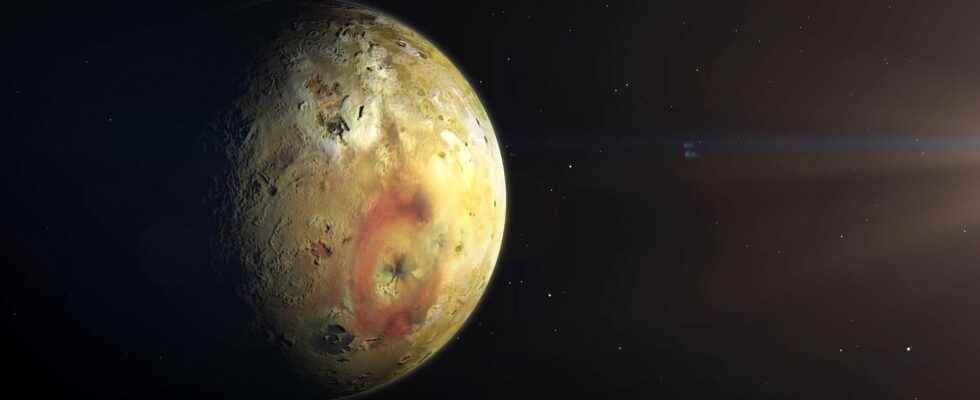Everyone who as a teenager has seen the movie 2010: Odyssey Twoadapted from the eponymous novel by Arthur Clarke, are certainly fascinated by the idea of exploring Io, the volcanic, and Europa, the ice, around Jupiter. This is certainly even more true for those passionate about volcanology, oceanography and exobiology.
Before the assignments Juice and Junothe mission Galileo in orbit around Jupiter had transmitted fascinating images of these two Medicean moons. Planetary scientists are still busy analyzing the data concerning these two worlds, using the knowledge learned in geology with our Blue Planet. They happen to have stumbled upon a riddle for some time now regarding Galileo’s images of the surface of Io. They reveal structures in the form of dunes which, if they are good, which is still being discussed, have nothing to envy to terrestrial and even Martian dunes.
However, those who have studied either geology or more generally planetology, for example with the famous works Earth by Frank Press and Raymond Siever and Fundamental planetary science: physics, chemistry, and habitability by Imke de Pater and Jack J. Lissauer, know that dunes form and evolve with sand grain transport processes. sand by saltation with winds. Trouble, Io, with her short stature and weak gravityhas a atmosphere very thin with a pressure of only one billionth ofatmosphere earthly. Its thickness is about 120 kilometers and it consists mainly of carbon dioxide. sulfur (NA2) leaving the attraction of Io, but constantly renewed by the volcanic eruptions dantesques of the little one moon of Jupiter.
It was impossible to have winds strong enough in this atmosphere to account for the potential dune fields observed, which had led to the rejection of the hypothesis that these were indeed dunes.
Aeolian transport with waves of sublimated sulfur dioxide
A team of American planetary scientists, however, think they have found the key to the enigma, as they explain via a publication in NatureCommunications. It is based on analyzes of images of the surface of Io, taken during the 14 years that the Galileo mission lasted.
” Our studies indicate the possibility that Io is a new “dune world” said the paper’s first author, George McDonald, a postdoctoral researcher in the Department of Earth and Planetary Sciences at Rutgers University in the United States, who added in a university statement: we have proposed, and quantitatively tested, a mechanism by which sand grains can move, and ultimately could form dunes. This work tells us that the environments in which dunes can be found are considerably more varied than typical desert landscapes and endlessly on certain parts of the Earth or on the fictional planet Arrakis in “Dunes“ “.
Io is very volcanicits surface appears as a mixture of flows of wash solidified from color dark, current flows and regions covered with a special “frost”, namely solidified sulfur dioxide.
According to the researchers’ calculations, these regions would sometimes be heated from below by the installation of streams of magma. The sulfur dioxide would sublimate then producing in turn on the surface dense flows of gas thus behaving like winds more powerful than those which can be born in the atmosphere of Io.
The mathematical models developed on Earth and accounting for the sizes and undulations of dune fields from the equations of the transport of grains of different size and density under the action of the flow of a fluid (in particular by wind transport) can then be transposed to the case of these flows of SO2. The grains of sand resulting from the alteration of the lava flows and the flows of sublimed sulfur dioxide are then able to explain the characteristics of the structures resembling fields of dunes, which accredits the hypothesis that they are .
Io is the closest of Jupiter’s largest moons and the most volcanic world in our Solar System, with over 300 active volcanoes, thanks to its proximity to Jupiter’s enormous gravitational pull. Explanations by Brian Cox. To obtain a fairly accurate French translation, click on the white rectangle at the bottom right. The English subtitles should then appear. Then click on the nut to the right of the rectangle, then on “Subtitles” and finally on “Translate automatically”. Choose “French”. © BBC Earth
Interested in what you just read?
